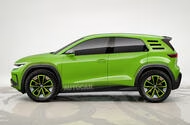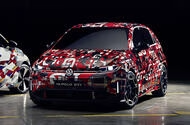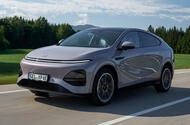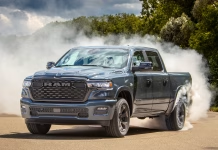Volkswagen Unveils Affordable ID Cross Electric SUV With Bold Design and 280 Mile Range...
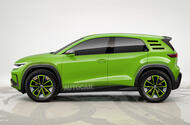 Electric replacement for T-Cross will be launched in 2026 with bold styling and up to 280 miles of range
Electric replacement for T-Cross will be launched in 2026 with bold styling and up to 280 miles of range
Volkswagen will reveal the ID Cross concept at the Munich motor show next week, previewing a supermini-sized electric crossover that will arrive at the end of 2026, priced from around £25k.
The EV has been named to clearly position it as an electric counterpart to the T-Cross, Volkswagen said on Wednesday.
This is mirrored by the production version of the ID 2all hatchback, which will take the ID Polo name.
It's part of a new naming strategy of well-known names adorning EVs in place of the numerical system that has been used since the ID 3 was revealed in 2018.
The concept will be unveiled on 7 September alongside a near-production camouflaged version of the ID Polo and the hot ID Polo GTI.
The ID Polo – set to start from £22k – and the ID Cross form half of Volkswagen Group’s new ‘Electric Urban Car Family’, which also includes the Skoda Epiq and Cupra Raval.
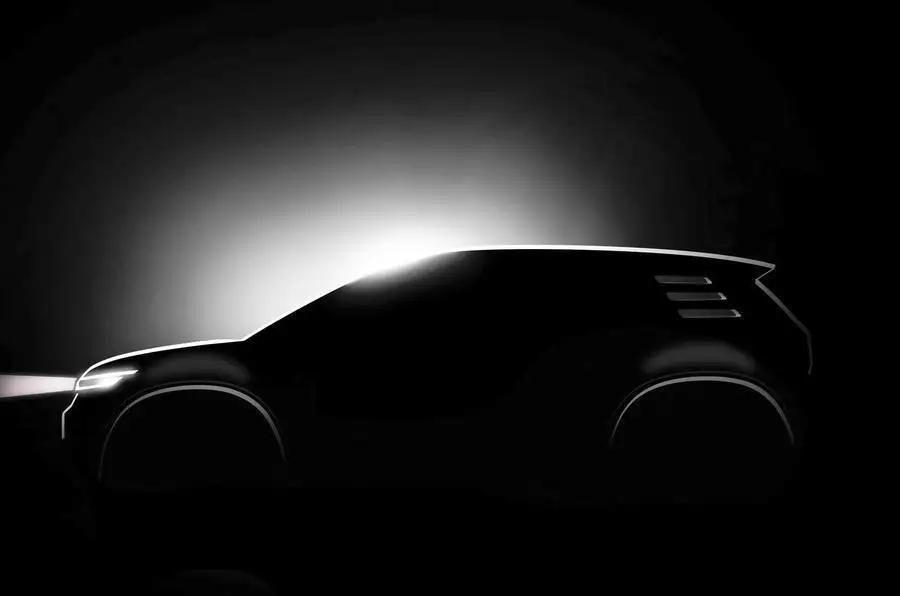
Volkswagen head of design Andreas Mindt previously described the ID Cross as a "safe, confident, bold" design that is "simple, like the ID 2all [now ID Polo]", referencing how that concept apes the clean, simplistic cues of previous Golf and Polo models.
Indeed, the resemblance to the supermini is obvious, although the higher-riding SUV will have a more upright silhouette with bulkier wheel arches, a distinctive vent-style motif on the C-pillar (which could be glass on the production car) and a chunky rear spoiler. There will be no obvious visual links between this new SUV and today's ID 4 and ID 5, as Mindt looks to usher in a whole new brand image.
It will measure around 4.1m long, have a wheelbase of 2600mm and offer more than the ID 2's 490 litres of boot space - no doubt with the same 50-litre lockable box under the boot floor for charging cables and valuables.
Inside, it's expected to be all but identical to the ID Polo, with a 12.9in infotainment touchscreen and 10.9in digital driver display - while adopting physical switches for the audio and climate controls.
Volkswagen is aiming to eradicate all glue and hard plastics from its next-generation interiors, in line with a pledge to boost material quality while reducing its cars' environmental impacts.
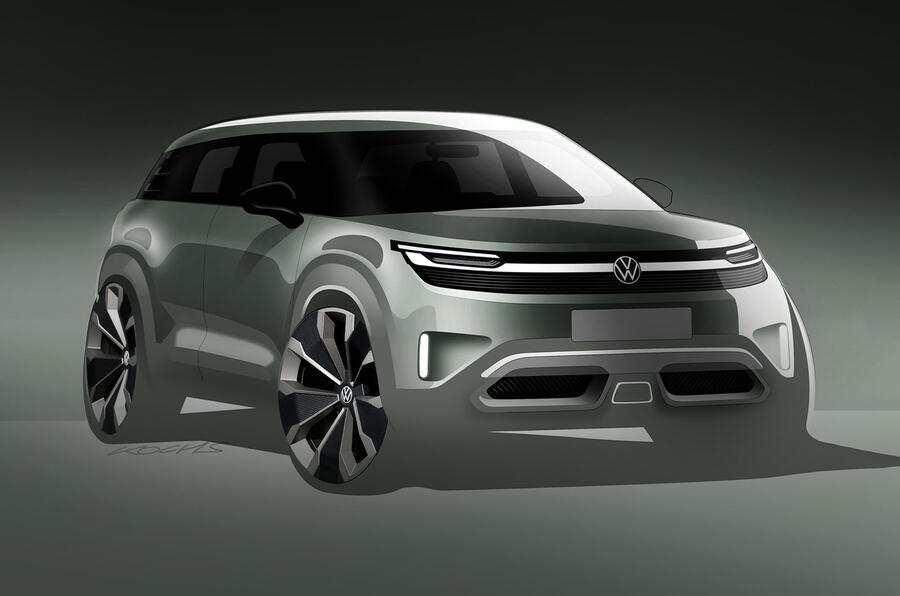
The roll-out of the Volkswagen Group's new Electric Urban Car Family, as Schäfer calls it, is central to stabilising the manufacturing giant following a turbulent period in which its profits and volumes have dipped significantly, which prompted plans for factory closures and swingeing job cuts across Europe.
Schäfer said that with the launch of the four new electric superminis, "the Brand Group Core is truly bringing its power to the road. We’re on the right track – and now we’re stepping it up a gear."
Colton Herta Sets Sights on Formula 1 with European Racing Move
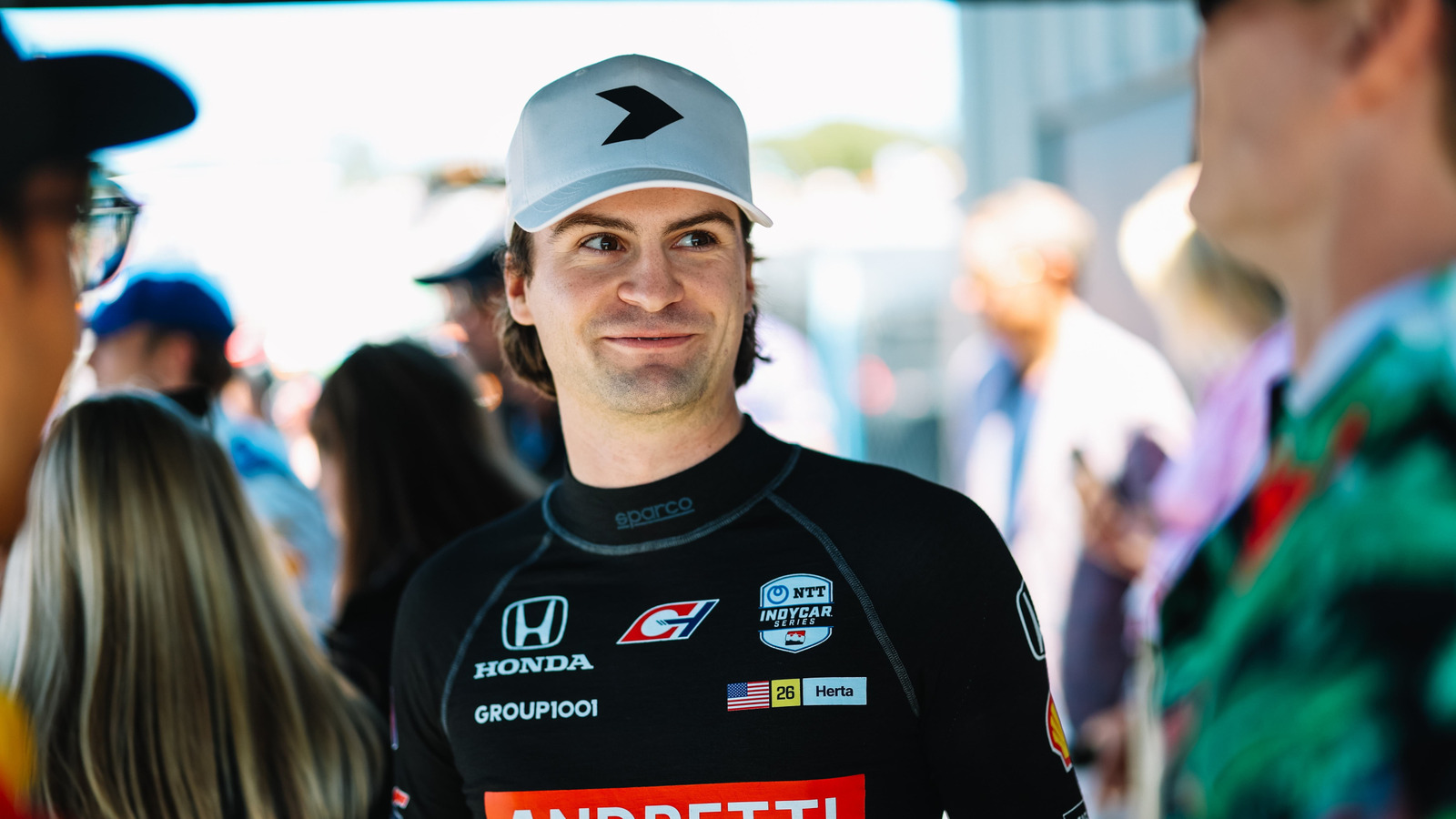
Volkswagen Revives Iconic Polo Name for Affordable Electric Hatchback Launching in 2026
The £22k production version of the Volkswagen ID 2all concept will be named the ID Polo, as the German brand starts using familiar model names on its electric models.
“Names like Polo or Golf are deeply ingrained,” said Volkswagen CEO Thomas Schäfer. “They stand for quality, accessible technology and heritage. We want to carry those qualities into the electric era.”
Schäfer’s reference to the Golf name also confirms Autocar’s earlier scoop that Volkswagen’s most iconic badge will be used on a future EV – a successor to the similarly sized and positioned ID 3, due later this decade.
Moreover, the ID 4 and ID 7 are expected to adopt the ID Tiguan and ID Passat names and the production version of the ID Every1 – a £17k baby hatchback due in 2027 – will be called the ID Up or ID Lupo.
![]()
The ID Polo’s name was announced today, ahead of next week’s Munich motor show, where Volkswagen will showcase the hatch in a camouflaged production guise ahead of its unveiling early next year.
It will be shown alongside a concept for its crossover sibling, which is confirmed to take the ID Cross name to signify its positioning as an electric counterpart to the T-Cross. The production version will launch at the end of 2026.
These cars are part of the Volkswagen Group’s ‘Electric Urban Car Family’ alongside the Skoda Epiq and Cupra Raval. All four are based on the same MEB Entry platform and will share powertrains.
The ID Polo will be offered with a choice of 38kWh and 56kWh batteries - the latter providing a range of around 280 miles – and the ability to charge at speeds of up to 125kW.
Buyers will have a choice of four power levels from a front-mounted motor.
This will top out at 223bhp in its most potent form, badged the ID Polo GTI – the first time the GTI badge has adorned an EV. It follows last year’s ID GTI concept.
Volkswagen has also confirmed the ID Polo’s dimensions: it will be 4053mm long, 1816mm wide and 1530mm tall. This makes it only slightly larger than the ICE Polo and nearly identical to the new Renault 4 EV.
Inside, it will use a 12.9in infotainment touchscreen and a 10.9in digital driver display, while adopting physical switches for the audio and climate controls.
Volkswagen is aiming to eradicate all glue and hard plastics from its next-generation interiors, in line with a pledge to boost material quality while reducing its cars' environmental impacts.
![]()
The introduction of the ID Polo and ID Cross names brings to an end the numeric naming Volkswagen has used for its ID models since the launch of the ID 3 in 2020.
Volkswagen admits that the system has failed to achieve the clarity it had hoped for, often leaving customers confused about how the EVs relate to their ICE counterparts.
While sharing names and being sold alongside each other, Volkswagen's EVs and ICE cars will be technically unrelated and have separate styles.
Nissan Z Nismo Finally Gets a Manual Transmission—Time to Make Your Move
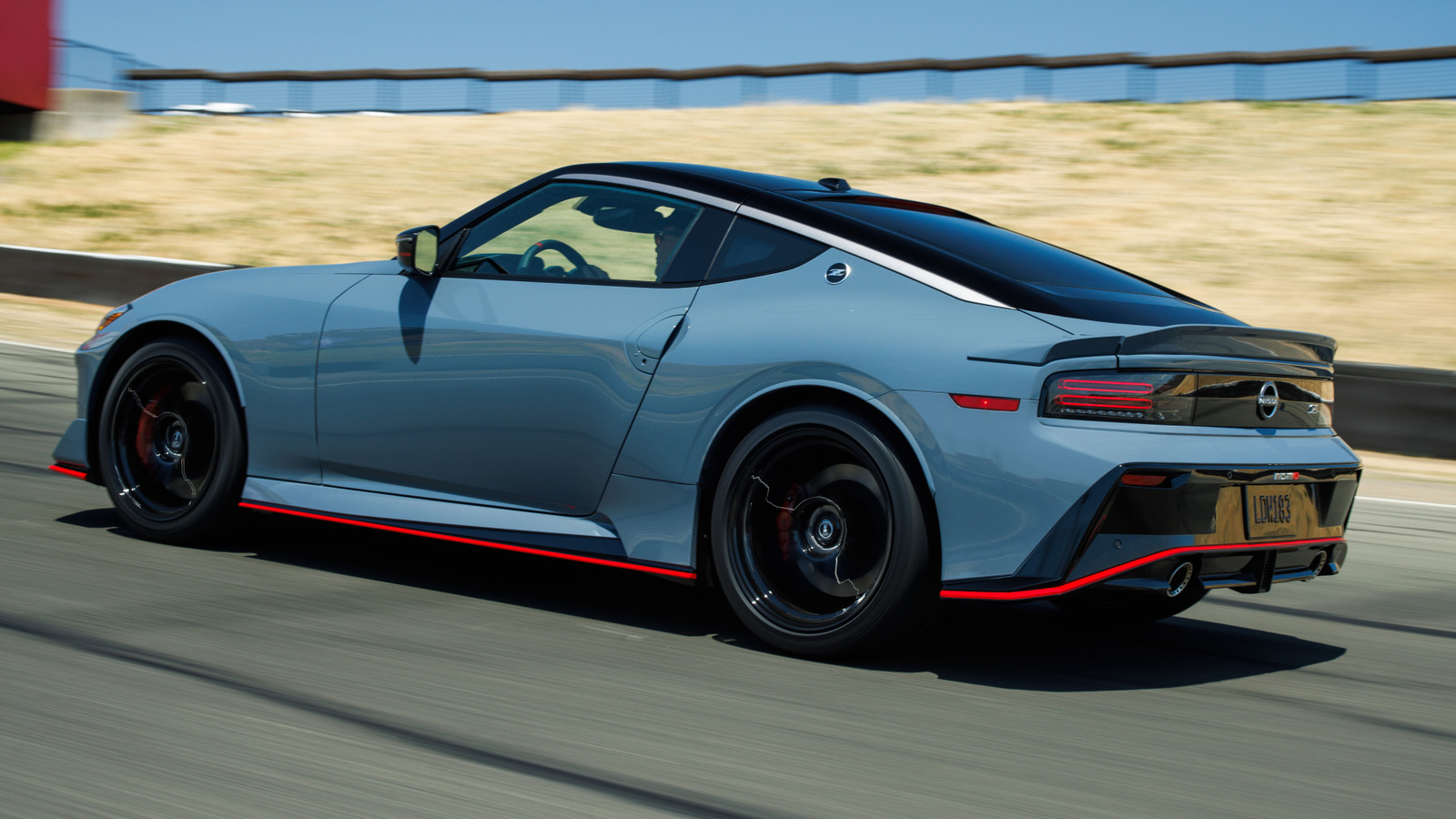
Volkswagen Unleashes Electric Thrills with 223bhp ID Polo GTI Hot Hatch Arriving in 2027
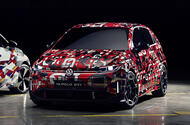 Previewed last year by the ID GTI concept, the hot electric Polo be the first EV to wear the GTI badge
Previewed last year by the ID GTI concept, the hot electric Polo be the first EV to wear the GTI badge
The Volkswagen ID Polo GTI will arrive in 2027 as the German brand’s first proper attempt at an electric hot hatch, packing 223bhp.
Previewed by last year’s ID GTI concept, the sporty EV was confirmed on Wednesday as Volkswagen announced that the production version of the ID 2all concept will be named the ID Polo.
The ID Polo GTI – the first time EV to wear the GTI badge – will be based on the same electric only MEB Entry platform as the ID Polo, which is driven by a single front-mounted motor.
Volkswagen has confirmed this will pack 223bhp, 8bhp more than the ID Polo GTI's Alpine A290 rival.
Autocar has previously reported that Volkswagen is developing a hardcore Clubsport version of the ID Polo, targeting a peak output of 282bhp.
It's also exploring whether a 400bhp four-wheel-drive R model utilising four in-wheel motors is feasible.
The prospect of an R model puts into doubt the future of the GTX name, which has so far adorned hot four-wheel-drive ID EVs.
A battery option has yet to be confirmed, but the ID Polo GTI will likely use the largest (56kWh) ID Polo pack, which in the regular car will provide a range of around 280 miles.
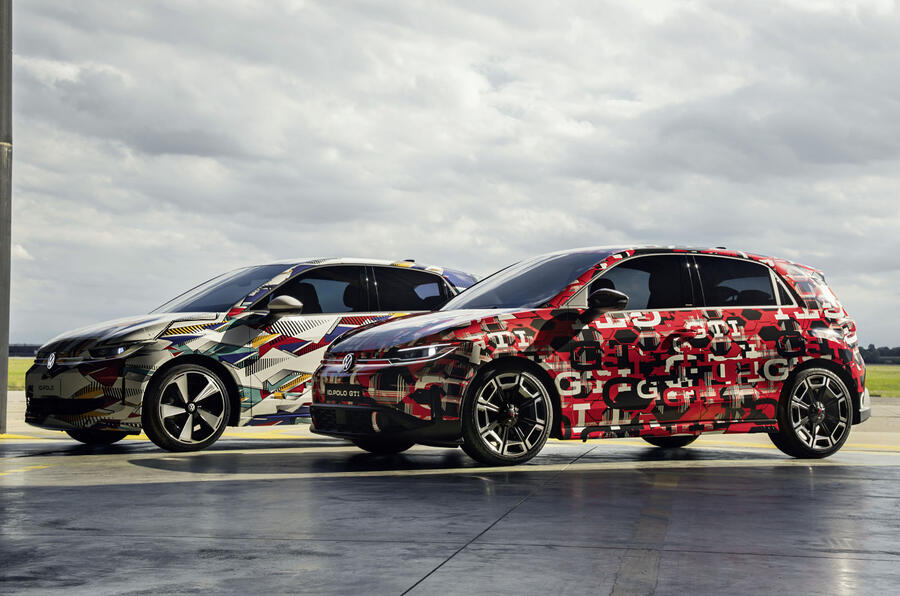
Like the standard ID Polo, the ID Polo GTI has been shown in near-production camouflaged guise. The pair share mostly the same design, but the GTI does sport some more aggressive cues, including slightly flared wheel arches, a small front diffuser, split boot-mounted spoilers and a pair of rear bumper cutouts (likely to mimic exhausts). It also appears to get larger alloy wheels of a bespoke design.
The regular ID Polo measures 4053mm long, 1816mm wide and 1530mm tall, which would make the ID Polo GTI only slightly larger than the A290.
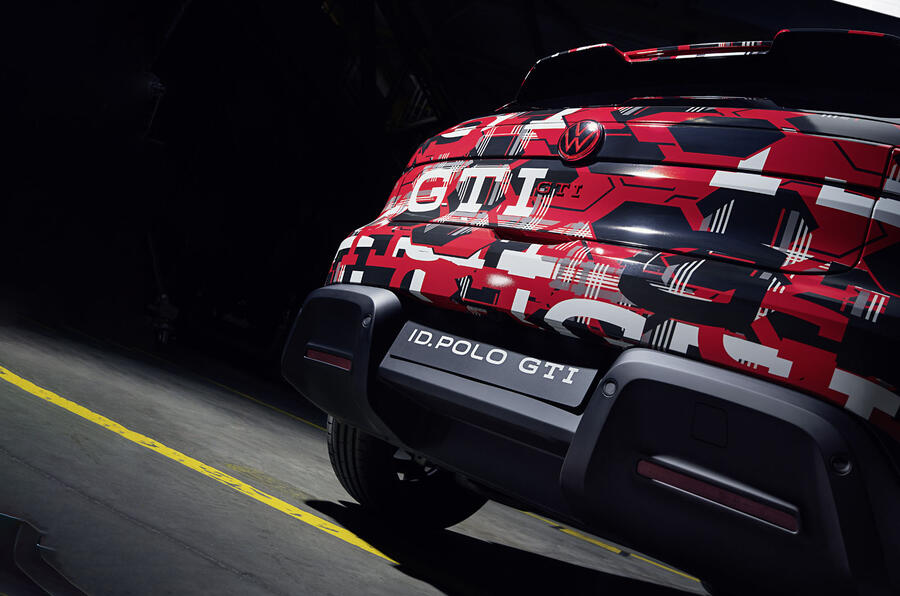
The standard ID Polo is tipped to be priced at around £22,000, but we expect the hot version to start closer to £30,000. For reference, the A290 starts at £32,000 with the government's new Electric Car Grant added.
Following the ID Polo GTI, Volkswagen is preparing to expand its performance brand across multiple electric model lines. CEO Thomas Schäfer previously told Autocar the new hot EVs will be "mind-blowing" to drive.
Mini Unveils Stunning Racing-Inspired JCW Models in Gas and Electric Versions
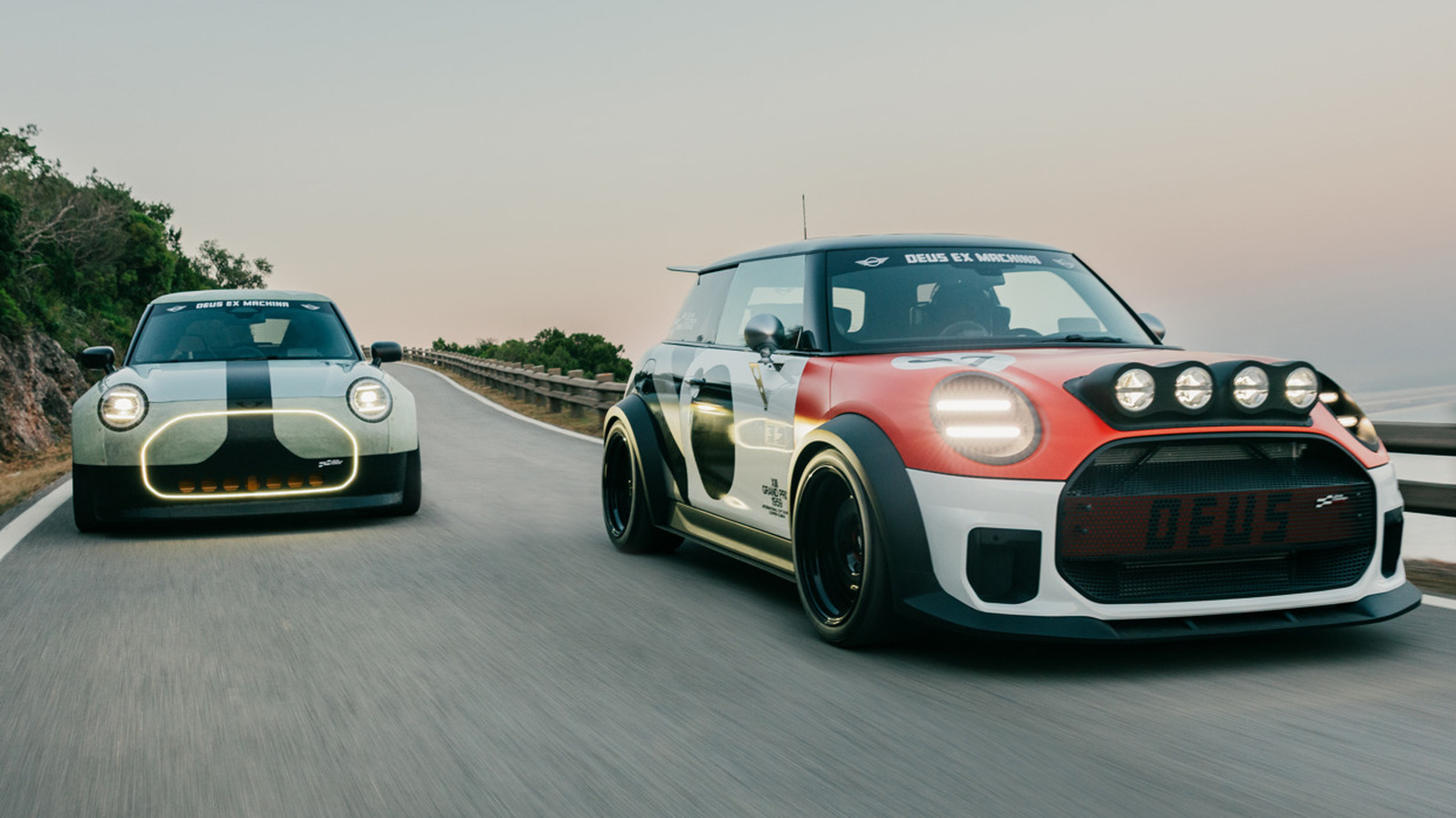
Cyber Attack Halts Land Rover Production as Hackers Exploit IT Flaw and Disrupt Global...
 No new Land Rover cars are able to be made or registered as manufacturer races to solve global system fault
No new Land Rover cars are able to be made or registered as manufacturer races to solve global system fault
The group that hacked Marks & Spencer earlier this year has claimed responsibility for the cyber attack on JLR that has caused production shutdowns and sales stoppages.
Scattered Spider hit the British retailer in May, causing seven weeks of disruption and costing £300 million in lost operating profit.
Along with fellow hacking group Shiny Hunters, it claims to have obtained customer data after exploiting a similar flaw in JLR’s IT system, The Telegraph reports.
The claim was made on a Telegram messenger group, where a user linked to the hackers posted a screenshot of what appeared to show JLR's internal system.
A member of the group told The Telegraph that a well known flaw in SAP Netweaver - third-party software used by JLR - was exploited to access the data.
US cyber agency CISA warned about the flaw earlier this year. An update for the software was released, but whether JLR applied it is unknown.
It's also not known what data was taken or if a ransom demand has been made.
JLR told Autocar in a statement yesterday that “there is no evidence any customer data has been stolen”.
It refused to comment on the latest claims today (Wednesday).
The hack has caused three days of sales and production issues which have “severely disrupted” JLR's operations.
In an effort to combat the hack, JLR began “shutting down our systems” on Tuesday and is now in the process of rebuilding them.
This shutting down of systems has led to a halt of production at both Halewood and Solihull, where the Range Rover and Range Rover Sport are built.
JLR was also unable to confirm a timescale for the fix, but it's understood that the hack could continue to cause disruption for the rest of the week.
According to The Telegraph, the hacking groups are believed to be made up of teenagers from English-speaking countries.
Autocar first reported the issues affecting JLR on Monday, when dealers couldn't register new cars on 'new plate day' (1 September), traditionally one of the year's busiest for registrations.
To combat the delays, the registering of cars is now being carried out by hand, a JLR dealer revealed to Autocar on Wednesday.
Autocar also understands the issues are impacting parts supplies and new car handovers, although JLR wouldn't confirm this.
JLR's public-facing website appears to be fully operational, including the car configurator.
Tesla’s Robotaxi Breakthrough Redefines Safety and Innovation
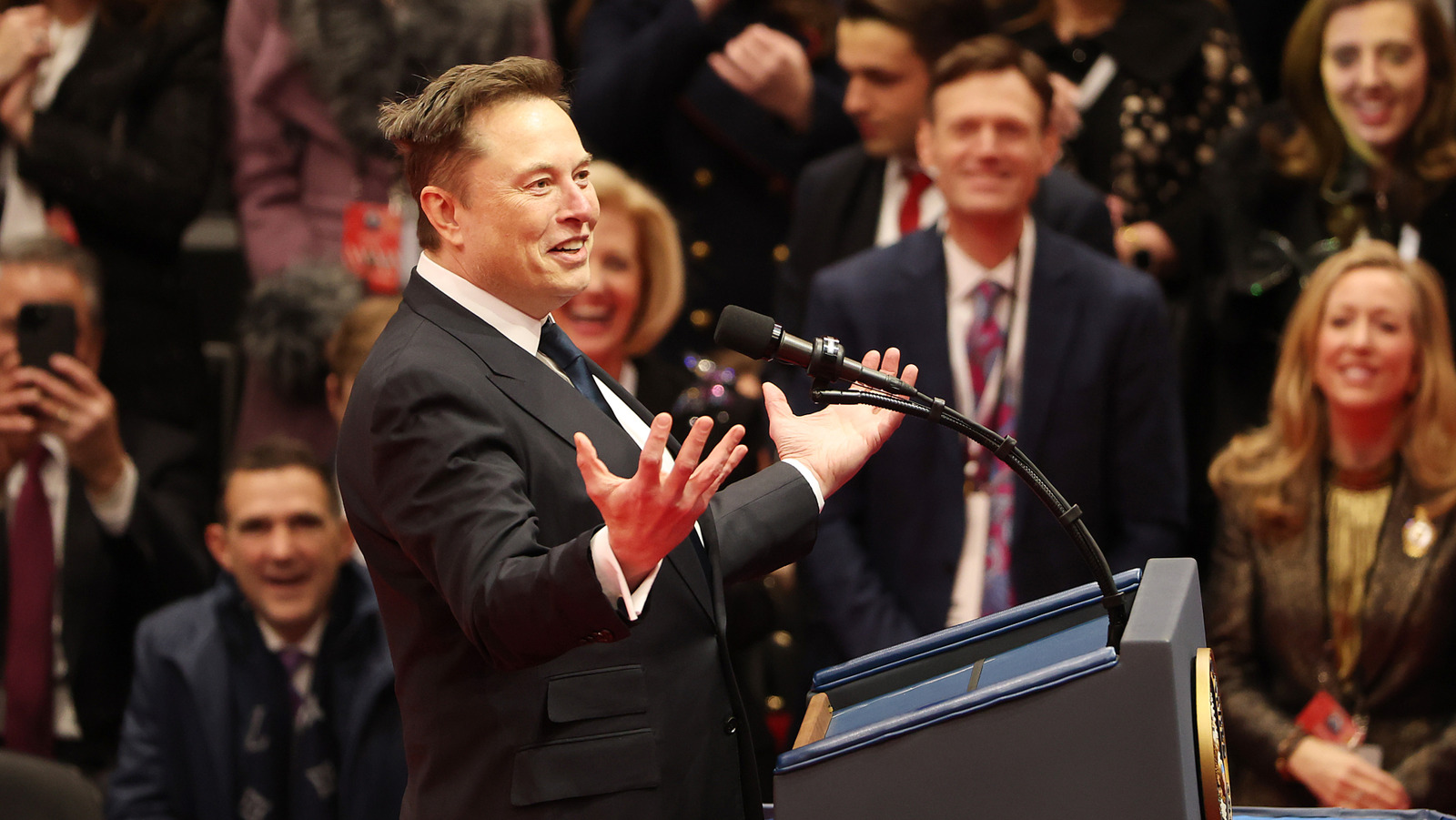
XPeng G6 Redefines Electric SUVs With Cutting Edge Tech Fast Charging and Spacious Design
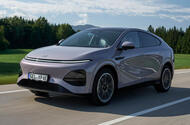 Chinese mid-sized electric SUV majors on space, tech, charging speed and value Xpeng has been operating for more than a decade and we’ve been writing about it since 2019. Yet this Xpeng G6 might still need a bit of an intro.The company was founded in Guangzhou, China, by former senior executives of state-owned GAC. The enthusiasm for advanced automotive technology that those two executives, Xia Heng and He Tao, put at the core of their new enterprise can be read as a reaction against the presumably conservative attitudes of their former employer.Xpeng had offices in Silicon Valley, California, within a few short years of its formation and was closely involved in the development of autonomous cars before its fifth birthday. It is international in its outlook and independently operated – its shares are traded on the New York and Hong Kong stock exchanges – and it remains committed to distinguishing its electric cars from their peers primarily via their technology.It introduced the G6 to the UK in February 2025 and it has already been updated. Up front there’s a new full-width lightbar, the rear’s shape has been adjusted ever so slightly to make it more coupe-like, there are some new colours, the interior gets a digital rear-view mirror and some ambient lighting.But the big change is with the battery. An 80.8kWh lithium iron phosphate battery replaces the 87.5kWh lithium-ion battery. This eliminates the use of more expensive and less sustainable materials such as cobalt, manganese and nickel. But it also delivers quicker charging speeds. It will now deliver up to 451kW - making it the quickest charger in its class.
Chinese mid-sized electric SUV majors on space, tech, charging speed and value Xpeng has been operating for more than a decade and we’ve been writing about it since 2019. Yet this Xpeng G6 might still need a bit of an intro.The company was founded in Guangzhou, China, by former senior executives of state-owned GAC. The enthusiasm for advanced automotive technology that those two executives, Xia Heng and He Tao, put at the core of their new enterprise can be read as a reaction against the presumably conservative attitudes of their former employer.Xpeng had offices in Silicon Valley, California, within a few short years of its formation and was closely involved in the development of autonomous cars before its fifth birthday. It is international in its outlook and independently operated – its shares are traded on the New York and Hong Kong stock exchanges – and it remains committed to distinguishing its electric cars from their peers primarily via their technology.It introduced the G6 to the UK in February 2025 and it has already been updated. Up front there’s a new full-width lightbar, the rear’s shape has been adjusted ever so slightly to make it more coupe-like, there are some new colours, the interior gets a digital rear-view mirror and some ambient lighting.But the big change is with the battery. An 80.8kWh lithium iron phosphate battery replaces the 87.5kWh lithium-ion battery. This eliminates the use of more expensive and less sustainable materials such as cobalt, manganese and nickel. But it also delivers quicker charging speeds. It will now deliver up to 451kW - making it the quickest charger in its class.Ram 1500 Roars Back with Hemi Power to Win Over Truck Fans


